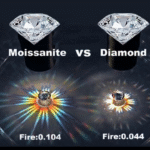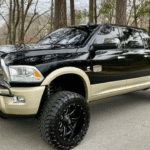A carrier bearing, also known as a center support bearing, is a critical component in a vehicle’s drivetrain, particularly in trucks, SUVs, and rear-wheel-drive cars with long driveshafts. Its primary role is to support the driveshaft, minimize vibrations, and ensure smooth power transfer from the transmission to the rear differential.
When a carrier bearing fails, it can lead to excessive driveline vibration, unusual noises, and even drivetrain damage if left unchecked. In this guide, we’ll cover:
- How to identify a failing carrier bearing
- Step-by-step replacement instructions
- Tips for choosing the right replacement part
- Preventive maintenance to extend bearing life
Whether you’re a DIY mechanic or just want to understand this crucial component, this guide will help you diagnose and fix carrier bearing issues effectively.
Signs of a Failing Carrier Bearing
A failing carrier bearing exhibits several noticeable symptoms. Catching these early can prevent further damage to your drivetrain.
1. Excessive Vibrations
- At certain speeds (usually 40-60 mph), you may feel strong vibrations coming from underneath the vehicle.
- The shaking often worsens as speed increases.
- Unlike wheel balance issues, carrier bearing vibrations are more consistent and don’t change with braking.
2. Unusual Noises
- A whirring or grinding noise that increases with speed.
- A clunking sound when shifting gears or accelerating.
- The noise is typically centralized under the vehicle’s midsection.
3. Visible Driveshaft Movement
- If the bearing is severely worn, the driveshaft may sag or wobble.
- Jack up the vehicle (safely) and check for excessive play by shaking the driveshaft near the bearing.
4. Difficulty Shifting Gears (in Some Cases)
- A severely damaged bearing can cause misalignment, leading to rough gear shifts (especially in manual transmissions).
How to Diagnose a Bad Carrier Bearing
Before replacing the bearing, confirm that it’s the actual issue.
Step 1: Visual Inspection
- Locate the carrier bearing (usually mounted near the middle of the driveshaft).
- Check for:
- Cracks or tears in the rubber housing.
- Grease leaks (some bearings are sealed, while others require lubrication).
- Corrosion or rust around the bearing.
Step 2: Test for Play
- With the vehicle safely lifted, grab the driveshaft near the bearing.
- Try moving it up, down, and side-to-side.
- Excessive movement indicates a worn-out bearing.
Step 3: Road Test
- Drive at different speeds and note when vibrations occur.
- If the issue persists after balancing tires and checking U-joints, the bearing is likely the culprit.
How to Replace a Carrier Bearing: Step-by-Step Guide
Tools & Materials Needed
- Jack and jack stands
- Socket set & wrenches
- Torque wrench
- Pry bar or bearing press (if needed)
- New carrier bearing (OEM or aftermarket)
- Threadlocker (optional)
Step 1: Lift and Secure the Vehicle
- Park on a level surface, engage the parking brake, and chock the wheels.
- Lift the vehicle and support it securely on jack stands.
Step 2: Remove the Driveshaft
- Mark the driveshaft alignment (with chalk or paint) to ensure proper reassembly.
- Unbolt the driveshaft from the differential and transmission.
- Support the driveshaft as you remove it to prevent damage.
Step 3: Remove the Old Carrier Bearing
- Unbolt the carrier bearing bracket from the chassis.
- Some bearings press out, while others are bolted in.
- Use a bearing puller or press if necessary.
Step 4: Install the New Bearing
- Press or bolt the new bearing into place.
- Ensure it’s aligned correctly to prevent premature wear.
- Apply threadlocker to bolts for added security.
Step 5: Reinstall the Driveshaft
- Carefully slide the driveshaft back into position.
- Reattach it to the transmission and differential, following your alignment marks.
- Torque all bolts to the manufacturer’s specifications.
Step 6: Test Drive
- Lower the vehicle and take a short test drive.
- Listen for unusual noises and check for vibrations.
Choosing the Right Replacement Carrier Bearing
Not all carrier bearing are created equal. Consider these factors:
1. OEM vs. Aftermarket
- OEM bearings ensure perfect fitment but can be expensive.
- Aftermarket brands (Moog, SKF, ACDelco) offer good quality at lower prices.
2. Sealed vs. Serviceable Bearings
- Sealed bearings are maintenance-free but must be replaced when worn.
- Serviceable bearings allow for re-greasing, extending lifespan.
3. Material & Build Quality
- Look for high-grade steel or polyurethane housings for durability.
- Avoid cheap, no-name brands that may fail prematurely.
Preventive Maintenance Tips
To maximize your bearing’s lifespan:
- Regularly inspect for cracks or leaks.
- Lubricate serviceable bearings (if applicable).
- Avoid overloading the vehicle beyond its rated capacity.
- Check U-joints and driveshaft balance periodically.
FAQs
1. Can I drive with a bad carrier bearing?
- Not recommended. A failing bearing can damage the driveshaft or even lead to drivetrain failure.
2. How long do carrier bearing last?
- Typically 80,000–150,000 miles, depending on driving conditions.
3. Can I replace it myself?
- Yes, if you have basic mechanical skills and the right tools.
4. What’s the average replacement cost?
- DIY: $50–$150 (parts only).
- Mechanic: $200–$400 (parts + labor).
Conclusion
A failing carrier bearing can cause significant drivetrain issues if ignored. By recognizing the symptoms early and following this guide, you can diagnose, replace, and maintain your bearing efficiently.
Whether you choose to tackle the job yourself or consult a mechanic, addressing the problem promptly will save you from costly repairs down the road.









